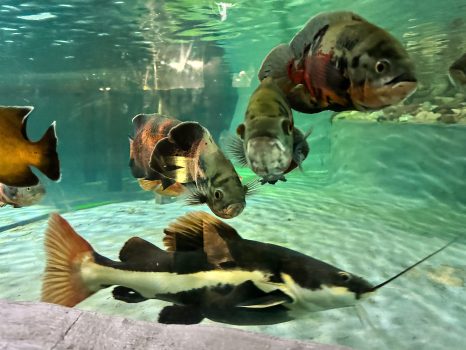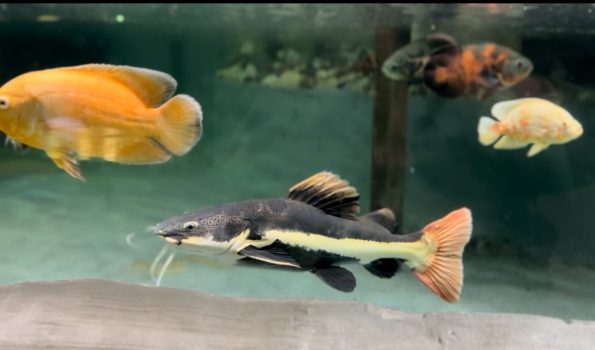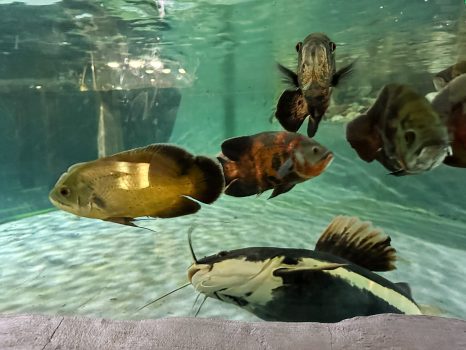Red Tail Catfish
Common Name: Red Tail Catfish
Scientific Name: Phractocephalus hemioliopterus
Names: Gustave
Locations: Whitby





Diet
Red Tail Catfish are omnivorous and primarily feed on a variety of foods including fish, crustaceans, insects, and plant matter. They are opportunistic feeders and will consume almost anything they can fit into their mouths.
Average lifespan
In captivity, Red Tail Catfish can live around 15 to 20 years with proper care.
Size
Red Tail Catfish are large freshwater fish known for their impressive size. They can grow to lengths of about 1 to 1.5 meters (3.3 to 5 feet), although some individuals have been reported to reach lengths of up to 1.8 meters (6 feet) or more.
Weight
Adult Red Tail Catfish can weigh anywhere from 20 to 50 kilograms (44 to 110 pounds), with some exceptionally large specimens exceeding 100 kilograms (220 pounds).
About
Red Tail Catfish are native to South America, particularly found in the Amazon and Orinoco river basins. They inhabit freshwater rivers, lakes, and flooded forests, preferring slow-moving or stagnant waters with plenty of cover.
Size and behavior
Red Tail Catfish are known for their distinctive red tail fins, which contrast sharply with their dark gray or black bodies. They are bottom-dwelling fish and are often found in deep pools or slow-moving sections of rivers. Red Tail Catfish are nocturnal feeders and are most active during the night.
Diet and nutrition
Red Tail Catfish have a varied diet consisting mainly of fish, crustaceans, insects, and plant matter. They are opportunistic feeders and will consume almost anything they can overpower. In captivity, it’s important to provide a balanced diet that includes a mix of high-quality pellets, live or frozen foods, and fresh vegetables.
Conservation status
The conservation status of Red Tail Catfish is currently of least concern. While they may face threats from habitat loss, pollution, and overfishing in some areas, they are still abundant in their native range. However, local populations may be affected by habitat degradation and overexploitation, especially in heavily fished areas.
Fun fact
Despite their large size and formidable appearance, Red Tail Catfish are popular aquarium fish and are kept by hobbyists around the world. However, their immense size and voracious appetite mean they require large aquariums and specialized care which is not attainable for most.. Additionally, Red Tail Catfish have been known to form close bonds with their keepers and can recognize them over time, making them fascinating and rewarding species for public aquariums.
Call or visit your local Reptilia Facility to learn how you can adopt one of these amazing reptiles.








